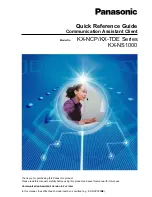
NovaLynx Corporation________________________________________________________________________________
200-WS-02E
Page 4
December 2018
1
FORWARD
Thank you for purchasing NovaLynx products. NovaLynx has been designing and manufacturing
weather instruments since 1988. NovaLynx represents several well-known brands of quality
manufacturers, including Gill Instruments, RM Young, Kipp & Zonen, and Vaisala. It is our hope that our
products will meet all your monitoring requirements.
2
INTRODUCTION
The 200-WS-02E Wind Sensor assembly consists of two major parts: a rotating cup style anemometer
for measuring wind speed and a wind vane for measuring horizontal wind direction. The anemometer's
rotating magnets cause a reed switch to close momentarily 3 times per revolution of the cup assembly.
The coaxially mounted wind vane is connected to a potentiometer whose resistance changes
proportionally to the direction the vane is pointing. The complete sensor assembly is designed to
mount on a 1" diameter pipe stub. The standard 40-foot (12 m) cable is stripped and tinned for
connection to the user's monitoring equipment.
This manual contains information to aid in the design of custom interface circuits for use with the
NovaLynx Model 200-WS-02E Wind Sensor. This information is supplied to systems integrators with the
express understanding that NovaLynx Corporation assumes no responsibility or liability for the
operation of the wind sensor as a part of any equipment that has been designed or furnished by any
organization other than NovaLynx.
3
TECHNICAL SPECIFICATION
3.1
Anemometer Details
The anemometer is rated for wind speeds up to 125 miles per hour and has a starting threshold of
approximately 1.2 mile per hour. The approximate speed constant for the anemometer is 1.25
mph/Hz.
Air movement (wind) causes the 3-cup and hub assembly to rotate, moving the permanent magnets
embedded in the hub over a magnetic reed switch fixed in the base. Three closures of the reed switch
will be produced for each revolution of the cup assembly. The ratio of closed-to-open time is nominally
1/10 of the total period for a revolution of the wind cups. This duty cycle may change slightly as the
sensor ages and with exposure to temperature extremes.
The magnetic reed switch capsule is rated to carry a maximum current of 10.0 mA with an applied
voltage of no more than 50 volts AC or DC.




























